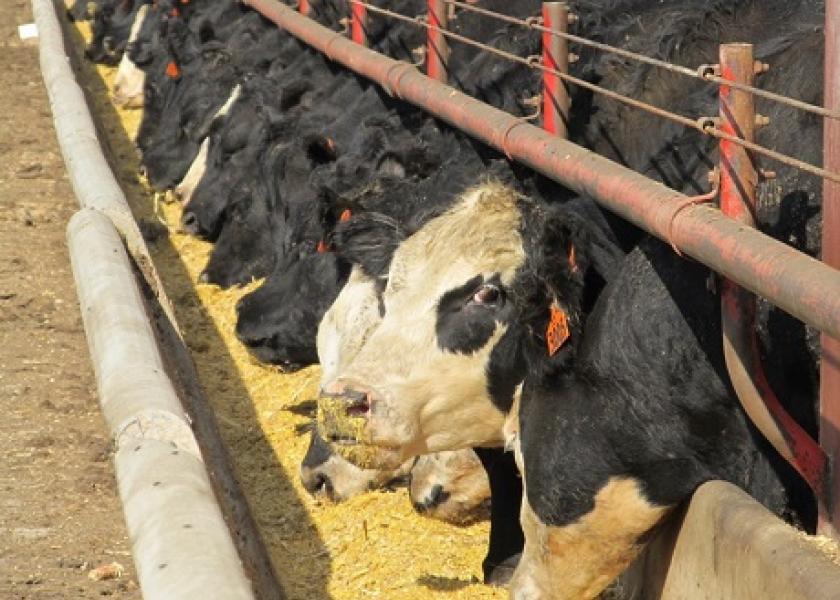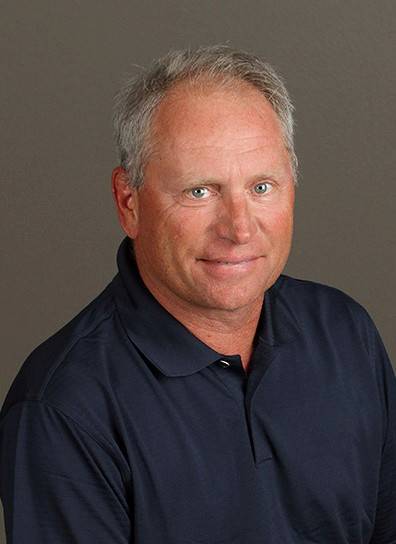Cornett: Q&A With An Iowa Cattle Feeder

The more folks I talk to during this series, the more I ruminate on it, the more my lean-toward leans toward thinking that a law that would require a minimum number of cattle be traded on the cash market, at this point, would be a mistake.
But there are smarter people than I who think otherwise. One of them is Brad Kooima, a commodity broker and cattle feeder in Sioux Center, Iowa. He’s been involved heavily in the intra-industry discussions on finding ways to improve cattle price discovery and has been outspoken in favor of mandating minimum levels of cash trading to provide a base point to set cattle prices for those who “piggyback” on cash sales to price their contract cattle.
If I just interview him, ask him my questions and report back, I thought, those answers will have to go through the sieve of my biases and opinions. So, we agreed to an email Q&A. I’m the Q. He’s the A.
Q: You seem sure that more spot trading would help cattle prices. But the Koontz and TAMU economist folks say we have enough. I have looked at their studies and it looks they know a lot. Why not go with their recommendations?

Kooima: In November of 2021 we saw an interesting set of fundamentals. We saw slaughter levels exceed levels we hadn't seen for almost three years, we had average weights above a year ago and boxes drop over $25 per cwt. At the same time cash prices improved $12-15.
Why? Because the amount of negotiated cash cattle trade was also higher than it had been in years. The studies I have seen talk about what it takes to have price discovery. I would like to see a study that uses current data and asks the question, "What is the cost to the cash market and the cash trader as the number of AMAs (alternative marketing agreements) increase?"
Q: If you had to choose between prompt delivery and more cash trade, which would you choose?
Kooima: I don’t know why I have to choose between prompt delivery and more cash, but I would choose more cash. This is one thing the south does better than the north. There has long been an understanding in the south that cattle will be picked up within 14 days and if they aren’t they get weighed and the packer starts to pay the feed bill, which incentivizes the packer to harvest the cattle on time. I would prefer that we had prompt delivery everywhere. Iowa and others are going to bring policy to the summer NCBA meeting addressing the 14-day policy.
Most of the northern feedlots do not have their own scales and that limits the leverage of being able to weigh back cattle. The unfortunate reality for us is that sometimes we have no other option as we are relieved we are getting a bid. I have personally had it when I have made the sale of a pen of cattle contingent on the cattle getting picked up within 14 days and then the offer to buy the cattle is pulled. I certainly recognize that giving the packer more days is not good for the industry much like giving the packer more captive supply isn’t good either.
Q: It seems that after NCBA launched its voluntary program, there was a lot more trading in the commercial yards. So why do we need mandates?
Kooima: The south should be commended for taking this issue on and increasing the number of cash traded cattle. Both Kansas and Texas, particularly Texas have increased the numbers traded. The inclusion of negotiated grid into the cash trade category is largely why. We had discussion in one the of the working groups that I was part of for the NCBA that we need to ensure that these negotiated grids are indeed negotiated. The problem here is not the feeder rather the problem is the packer. We can express that we want to sell cattle but if only one, or maybe at times, two packers or none at all actually bid, that is not robust price discovery in my opinion. The level of participation by the big four varies greatly from fairly decent to almost none.
Q: Since you guys have Congress in a law-making mood, would it not be more useful to mandate they publish a public grid for each plant each morning?
Kooima: Seems like a decent concept…anything that improves transparency is a good idea. Like paying a “market maker” because he does the hard work of negotiating is also a valid notion. BUT, the packer has to be willing to provide the information for either of these to happen and he won’t unless he is forced.
Q: You've said you think the family-farmer-feeder can't compete in this system. The big yards and contracts are turning them into residual suppliers. How would more cash trade address that?
Kooima: According to USDA, the average formula trader is getting $30-40 more per head than the cash trader. Traditionally it is the farmer feeder that is a cash trader, so clearly he is at a disadvantage. To me the issue is twofold:
- Transparency. Why is it that we can’t get the formula library meaningfully rolled out?
- Increasing the number of cash trade which I believe does indeed increase cash which I explained earlier. If we learned nothing else from the Black Swan events of the last couple years it is that the cash trader was horribly disadvantaged because of the inability to get a bid of any kind while the packer was busy trying to keep up with their committed cattle.
Q: Some Great Plains guys argue that contracts help them plan their business and reduce their marketing costs and that the shelf cattle reduce packers' costs. In other words, they say the contracts are more efficient. Are you arguing against efficiency here? Like, maybe we need to slow down so the less efficient guys can keep up?
Kooima: This question makes it sound like I want to ban AMAs. That is not the case. However, we do need to strike a balance. My hope is that we can cooperatively create an environment where all cattlemen (including the cow/calf operations) have opportunity to thrive together. My fight is for the independent cattlemen. I have no concern about how efficient the packer is. The packer seems to be doing just fine. Why would I - or anyone for that matter - care about reducing the packer's cost? The irony here is that cash negotiated cattle are actually cheaper for the packer. I've been told this by executives from the packing industry and the USDA's data support that comment. Now I know someone reading this is going to say that their AMAs pay him more because his cattle are of higher quality. To that I would respond, "Good for you. Sounds like a grid to me." How about all the turn-in cattle? What about top of the markets, weighted average plus, or the high of the week, etc? Cattle in that category do nothing for price discovery or the industry. If efficiency is the main goal, I guess broiler and pork industry are efficient, and that is not the kind of industry I want for cattle.
Q: The farmer-feeders I've heard from all have land and feed their own corn. Doesn't that give them their own advantage over commercial yards? They've got diversification going for them. Nice net worths to ease the banker's worries. Flexibility (if cattle get too high, they can sell their corn instead.) Even if they're buying their feed, their basis is much lower. So, do they need to trade par with commercial yards?
Kooima: Let's see; corn is high...what is high? Make sure someone lets us know ahead of time so that we don't buy calves ahead of time after we cut the silage and put up the earlage, because we are cattle feeders. There are a lot of folks and businesses that depend on the feeder – veterinarian, truck driver, feed salesman, etc. Producers also have invested resources in their facilities and need to be able to service the debt. It is not a switch that one flips on and off.
Here's another thought, you guys in the south don't have weather like we have. Shouldn't we get compensated for the higher cost of gain? By the way, trading at par with commercial yards never entered my mind. According to USDA data, Iowa has the highest grading cattle in the U.S. Texas has the lowest grading cattle trading at par? Based on the data it looks to me like we should be premium.
Q: The spread between beef prices and the price of pig and chicken is wide and growing. Beef's market share is shrinking, and I can't think of any reason but price. And those lower prices are largely due to their vertical integration. Rather than tying beef to a less efficient system, should we not be trying to evolve into something that, to borrow from one of the folks who wrote me, "look at what's good about vertical integration and adopt the good parts."
Kooima: I am sure you can find a PhD that disagrees with me, but, this is my opinion based on feeding cattle since 1974 and being a commodity broker since 1980. Beef is a perishable commodity. We don’t throw it away. I believe we measure demand based on how much we can sell at what price. Based on the fact that boxed beef is currently near all time pre-covid highs and total beef production is year to date, 11% more than 2015-2019. I would say demand is just fine. It seems to me that vertical integration mostly benefits the packer.
Conclusion: Brad Kooima wanted to add this final note.
"Rural America depends on the independent non corporate operators and they are a main reason why people choose to live here.
"This is an example of why: In 2014 my small town of 3,500 had what has been called a 20-year flood. Water levels reached nearly 20 feet above flood stage and approximately 1/3 of the town was impacted. It was estimated that around 65 payloaders from area farmer feeders came to build dikes, fill sand bags and help move personal belongings to higher ground. This area has many family-run farms that rallied then to help and always will if they are still around. These folks are key to the future of sustainable farming as well as being a pillar of financial, social, and cultural strength of rural America. This is the group I am thankful for and the group that I will fight for."
Other columns in this series:
Cornett: Cattle Markets Could See ‘Techtonic Shifts’
Cornett: Insights From 'A Yankee' Feeder
Cornett: Stewardship and Sustainability Will Influence Price Discovery







